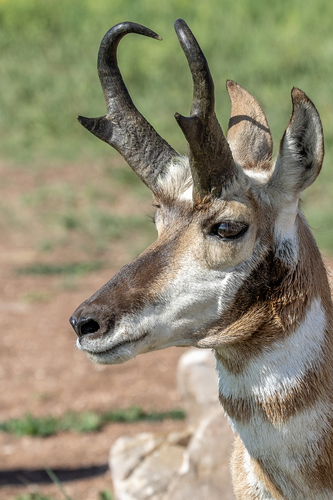
Pronghorn
The pronghorn, Antilocapra americana, is a speedster of the North American plains. With unique forked horns and a striking white rump, it dashes across grasslands at 55 mph. This remarkable agility aids in evading predators, highlighting its vital role in the ecosystem's balance.
10 years
Lifespan
41.0 - 68.0 kg
Weight
Length: 1.4 m; Height: 71 - 125 cm
Size
Black, White, Tan
Color
24 months
Age of Sexual Maturity
4-5 months
Age of Weaning
65 mph
Top Speed
Least Concern
Conservation Status
Stable
Population Trend
Characteristics
Known as the pronghorn, Antilocapra americana is a swift ungulate found in North American grasslands. It features distinct forked horns, a reddish-brown coat, and a white rump. Remarkable for its speed, it can run up to 55 mph, making it the fastest land mammal in the Western Hemisphere.
Distribution Range of the Pronghorn
Antilocapra americana, commonly known as the pronghorn, is native to North America. Its geographical distribution covers the central and western parts of the United States, extending into southern Canada and northern Mexico. Key regions include the Great Plains, the deserts of the southwest, and semi-arid areas of the western United States.
Pronghorn's Habitat
Environmental Conditions
Pronghorns typically inhabit open plains, grasslands, and deserts. They prefer areas that provide wide visibility and sparse vegetation, which aids in predator detection. The climate in these habitats ranges from arid to semi-arid, with seasonal temperature variations. Pronghorns are well adapted to environments with limited water resources.
Ecological Niche
The pronghorn occupies a niche as a primary consumer in its ecosystem, feeding predominantly on a variety of shrubs, forbs, and grasses. It has adapted to the open terrain by developing exceptional speed and endurance, which are crucial for evading predators. The pronghorn's ability to digest tough vegetation allows it to thrive in areas where other herbivores might struggle.
Copyright @ Nature Style Limited. All Rights Reserved.
 English
English